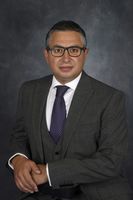Waikato > Private Hospitals & Specialists >
Heart Surgeon Group
Private Service, Cardiothoracic Surgery
Description
Our team of multidisciplinary surgeons is experienced in Adult Cardiothoracic Surgery specialised in aortic surgery, ischaemic heart disease, heart valve surgery, arterial revascularisation, aortic root surgery and rheumatic heart disease.
Prof McCormack, A/Prof Patel & Mr Pirone provide patient-centered care ensuring your values are considered throughout your surgical journey.
Cardiac operations performed include:
-
Coronary Artery Bypass Surgery
-
Aortic Valve Surgery
-
Mitral Valve Surgery
-
Aortovascular Surgery
Consultants
-

Professor David McCormack
Cardiothoracic Surgeon
-

A/Prof Nishith Patel
Cardiothoracic Surgeon
-

Mr Francesco Pirone
Cardiothoracic Surgeon
Ages
Adult / Pakeke, Older adult / Kaumātua
How do I access this service?
Referral
Referral Expectations
You will be seen by one of our surgeons for specialist assessment and management of symptoms. Your surgeon will work in collaboration with your cardiologist, GP and any other health professionals involved in your care keeping them informed of the outcome of these consultations. Some of the topics that can be discussed include:
- Pain assessment
- Review of symptoms
- Past medical history
- Treatment options
- Recovery from surgery
If an operation is necessary, you will be given the opportunity to meet your anaesthetist. You can discuss fully the process of anaesthesia and they will answer any questions you have.
If you require surgery, we will arrange an operation date that is convenient for you. You will be cared for by a skilled and knowledgeable expert team in the excellent facilities of Braemar Hospital including high quality theatres with the latest technologies.
Fees and Charges Description
If you have medical insurance, we can guide you throughout the pre-approval & claim process. Just contact us, we're happy to help and give advice on all insurances.
We are proud Affiliated Providers of all major health insurances; Southern Cross Medical Insurance, nib First Choice Medical Insurance, AIA Insurance NZ, Accuro Health Insurance, UniMed Health Insurance and New Zealand Police Association Insurance.
Languages Spoken
English, Italian, Spanish, Interpreting Service
Procedures / Treatments
When the arteries that supply the heart with blood (coronary arteries) become blocked with fatty substances, surgery may be required to restore blood flow to the heart muscle. Coronary Artery Bypass Surgery uses pieces of arteries from the arm or chest or from veins in the leg to create a detour around the blocked coronary artery. The procedure involves making a cut through the front of the chest and breastbone (sternotomy) to expose the heart. The heart is then stopped and its function taken over by a heart-lung machine. Once the new blood vessels are in place, the heart is restarted, the heart-lung machine disconnected and the breastbone closed with wires. The operation usually takes between three and five hours.
When the arteries that supply the heart with blood (coronary arteries) become blocked with fatty substances, surgery may be required to restore blood flow to the heart muscle. Coronary Artery Bypass Surgery uses pieces of arteries from the arm or chest or from veins in the leg to create a detour around the blocked coronary artery. The procedure involves making a cut through the front of the chest and breastbone (sternotomy) to expose the heart. The heart is then stopped and its function taken over by a heart-lung machine. Once the new blood vessels are in place, the heart is restarted, the heart-lung machine disconnected and the breastbone closed with wires. The operation usually takes between three and five hours.
When the arteries that supply the heart with blood (coronary arteries) become blocked with fatty substances, surgery may be required to restore blood flow to the heart muscle.
Coronary Artery Bypass Surgery uses pieces of arteries from the arm or chest or from veins in the leg to create a detour around the blocked coronary artery.
The procedure involves making a cut through the front of the chest and breastbone (sternotomy) to expose the heart. The heart is then stopped and its function taken over by a heart-lung machine. Once the new blood vessels are in place, the heart is restarted, the heart-lung machine disconnected and the breastbone closed with wires. The operation usually takes between three and five hours.
There are four major heart valves that control blood flow through the heart. If the valves become narrow (stenosis) so that blood flow through them becomes difficult, or leaky so that some blood flows in the wrong direction, they may need to be repaired or replaced. Valves may be damaged by diseases such as rheumatic fever or bacterial infection, degenerate with age or may not be formed properly at birth. Heart valve surgery involves making a cut through the front of the chest and breastbone (sternotomy) to expose the heart. The heart is then stopped and its function taken over by a heart-lung machine. Part of the heart is then opened and the valve repaired or possibly replaced using a human donor valve, a valve from a pig or cow or an artificial valve. The heart is then restarted, the heart-lung machine disconnected and the breastbone closed with wires. The operation usually takes between three and five hours.
There are four major heart valves that control blood flow through the heart. If the valves become narrow (stenosis) so that blood flow through them becomes difficult, or leaky so that some blood flows in the wrong direction, they may need to be repaired or replaced. Valves may be damaged by diseases such as rheumatic fever or bacterial infection, degenerate with age or may not be formed properly at birth. Heart valve surgery involves making a cut through the front of the chest and breastbone (sternotomy) to expose the heart. The heart is then stopped and its function taken over by a heart-lung machine. Part of the heart is then opened and the valve repaired or possibly replaced using a human donor valve, a valve from a pig or cow or an artificial valve. The heart is then restarted, the heart-lung machine disconnected and the breastbone closed with wires. The operation usually takes between three and five hours.
There are four major heart valves that control blood flow through the heart. If the valves become narrow (stenosis) so that blood flow through them becomes difficult, or leaky so that some blood flows in the wrong direction, they may need to be repaired or replaced. Valves may be damaged by diseases such as rheumatic fever or bacterial infection, degenerate with age or may not be formed properly at birth.
Heart valve surgery involves making a cut through the front of the chest and breastbone (sternotomy) to expose the heart. The heart is then stopped and its function taken over by a heart-lung machine. Part of the heart is then opened and the valve repaired or possibly replaced using a human donor valve, a valve from a pig or cow or an artificial valve. The heart is then restarted, the heart-lung machine disconnected and the breastbone closed with wires. The operation usually takes between three and five hours.
Sometimes people are born with abnormalities of the heart or major blood vessels. Surgery may be required to repair these defects and may be performed during childhood or left until adulthood. Congenital heart surgery can involve: Repairing the abnormality e.g. repairing defects in the internal walls of the heart with stitches or a patch made from the patient’s own tissue or from an artificial source or A procedure that will make the patient feel more comfortable but that will not necessarily correct the defect e.g. inserting a tube to connect the aorta to the pulmonary artery to increase the blood flow to the lungs.
Sometimes people are born with abnormalities of the heart or major blood vessels. Surgery may be required to repair these defects and may be performed during childhood or left until adulthood. Congenital heart surgery can involve: Repairing the abnormality e.g. repairing defects in the internal walls of the heart with stitches or a patch made from the patient’s own tissue or from an artificial source or A procedure that will make the patient feel more comfortable but that will not necessarily correct the defect e.g. inserting a tube to connect the aorta to the pulmonary artery to increase the blood flow to the lungs.
Sometimes people are born with abnormalities of the heart or major blood vessels. Surgery may be required to repair these defects and may be performed during childhood or left until adulthood.
Congenital heart surgery can involve:
- Repairing the abnormality e.g. repairing defects in the internal walls of the heart with stitches or a patch made from the patient’s own tissue or from an artificial source or
- A procedure that will make the patient feel more comfortable but that will not necessarily correct the defect e.g. inserting a tube to connect the aorta to the pulmonary artery to increase the blood flow to the lungs.
An aneurysm is a weak, bulging area that can develop on the wall of a blood vessel particularly in the aorta, the large artery that carries blood from the heart for delivery to the rest of the body. Once an aneurysm has been identified, surgery may be performed to avoid the danger of the aneurysm bursting. Aortic aneurysm surgery involves either: Open chest surgery in which the part of the aorta with the aneurysm is removed and replaced with an artificial graft or Insertion of a stent graft (an artificial tube) at the site of the aneurysm so that blood can flow through the tube and bypass the aneurysm. This is a less invasive procedure and involves small cuts or incisions in the upper thigh.
An aneurysm is a weak, bulging area that can develop on the wall of a blood vessel particularly in the aorta, the large artery that carries blood from the heart for delivery to the rest of the body. Once an aneurysm has been identified, surgery may be performed to avoid the danger of the aneurysm bursting. Aortic aneurysm surgery involves either: Open chest surgery in which the part of the aorta with the aneurysm is removed and replaced with an artificial graft or Insertion of a stent graft (an artificial tube) at the site of the aneurysm so that blood can flow through the tube and bypass the aneurysm. This is a less invasive procedure and involves small cuts or incisions in the upper thigh.
An aneurysm is a weak, bulging area that can develop on the wall of a blood vessel particularly in the aorta, the large artery that carries blood from the heart for delivery to the rest of the body.
Once an aneurysm has been identified, surgery may be performed to avoid the danger of the aneurysm bursting.
Aortic aneurysm surgery involves either:
- Open chest surgery in which the part of the aorta with the aneurysm is removed and replaced with an artificial graft or
- Insertion of a stent graft (an artificial tube) at the site of the aneurysm so that blood can flow through the tube and bypass the aneurysm. This is a less invasive procedure and involves small cuts or incisions in the upper thigh.
Disability Assistance
Wheelchair access
Parking
Free parking is provided at Braemar Hospital.
Pharmacy
Website
Contact Details
-
Phone
027 787 4366
-
Fax
(07) 843 9815
-
Mobile
027 SURGEON (027 787 4366)
Email
Website
Braemar Hospital
24 Ohaupo Road
Hamilton Lake
Hamilton
Waikato 3204
Street Address
Braemar Hospital
24 Ohaupo Road
Hamilton Lake
Hamilton
Waikato 3204
Was this page helpful?
This page was last updated at 1:11PM on March 18, 2025. This information is reviewed and edited by Heart Surgeon Group.

